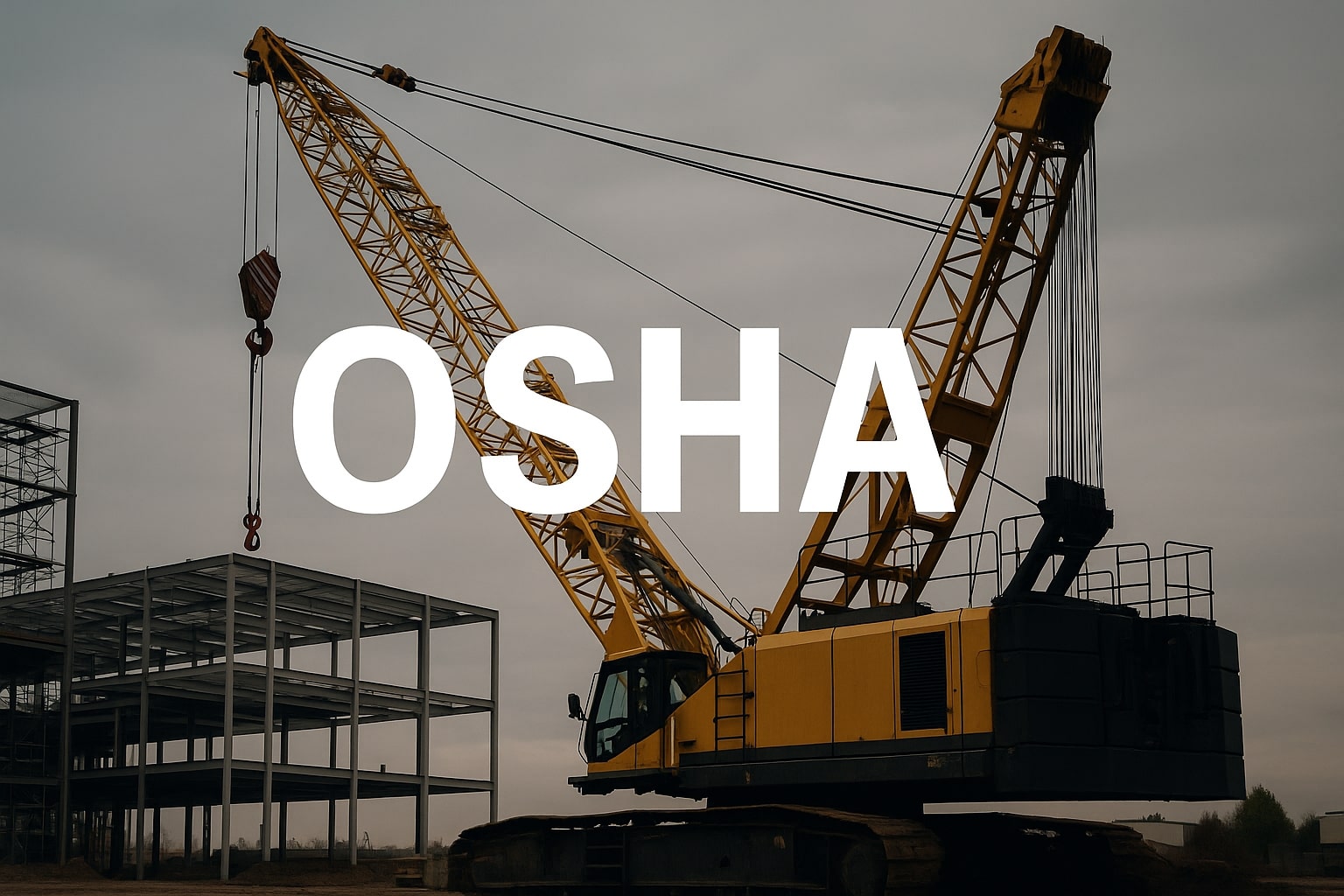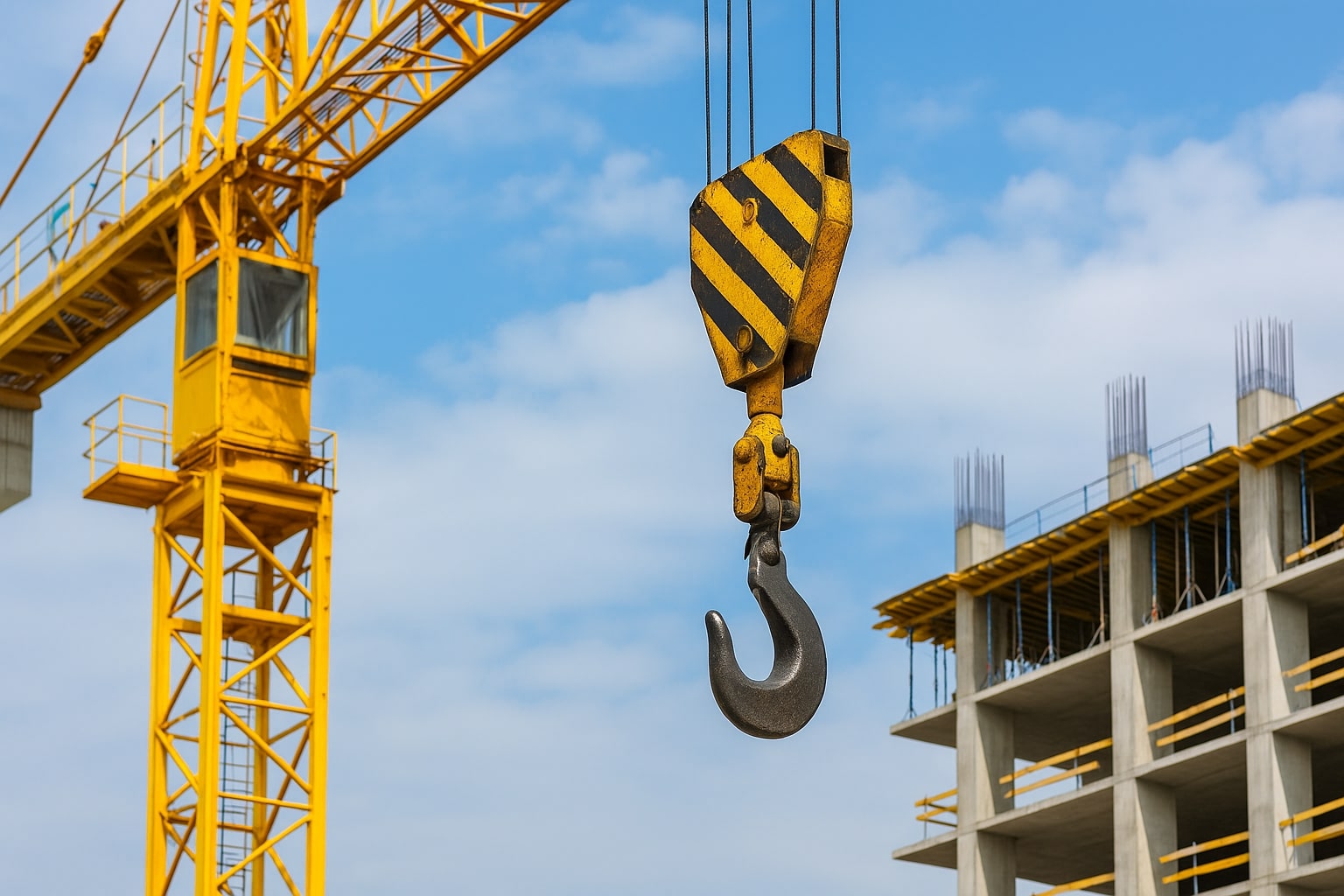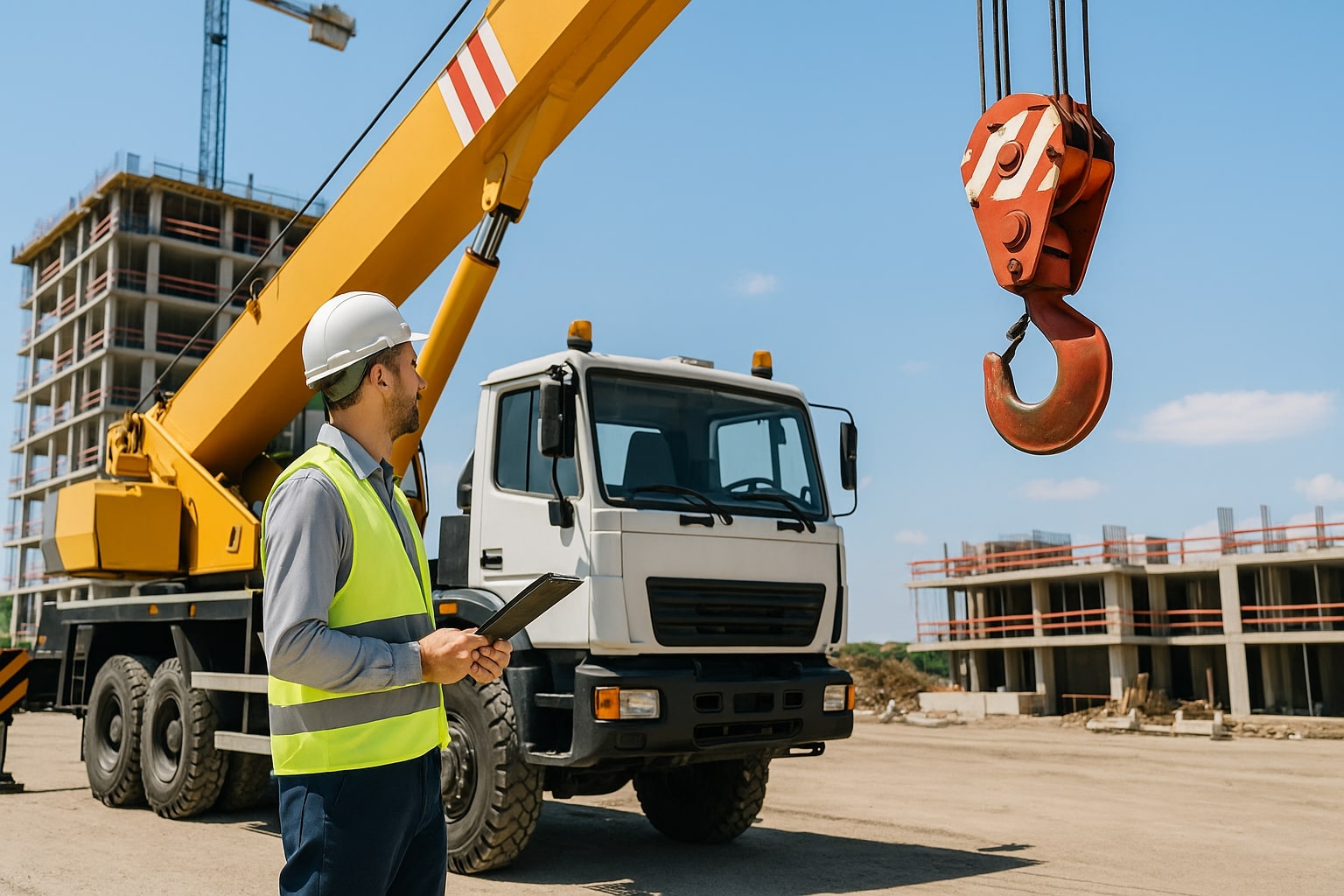OSHA Crane Safety Regulations
What Is OSHA?
The Occupational Safety and Health Administration (OSHA) is the U.S. federal agency responsible for enforcing workplace safety laws. For crane operations, OSHA’s regulations are legally binding—and failure to comply can lead to heavy fines, jobsite shutdowns, or serious accidents.
OSHA’s crane-specific regulations are found in 29 CFR 1926 Subpart CC, which lays out the safety rules for construction-related crane use, including:
- Operator certification requirements
- Inspection schedules and documentation
- Signalperson qualifications
- Equipment setup, operation, and maintenance
- Hazard mitigation protocols
Unlike ASME or ANSI, which offer best-practice standards, OSHA’s rules are law—compliance isn’t optional.
Unlike OSHA—which enforces safety laws—ASME creates technical standards that many OSHA regulations rely on. Following ASME B30 isn’t just best practice—it’s essential for safety audits, legal compliance, and risk reduction.

What Is OSHA Subpart CC?
OSHA 29 CFR 1926 Subpart CC is the formal regulation for Cranes and Derricks in Construction. Introduced in 2010 and frequently updated, Subpart CC outlines specific safety rules for:
| Category | What It Covers |
|---|---|
| Operator Certification | All crane operators must be certified by an accredited agency like NCCCO |
| Crane Inspections | Daily, monthly, and annual inspections required—with written documentation |
| Assembly/Disassembly | Only qualified personnel may assemble cranes—specific rules for fall protection |
| Signalperson Requirements | Signalpersons must be qualified per OSHA 1926.1428 |
| Power Line Safety | Rules for working near energized power lines |
| Ground Conditions | Employers must ensure proper support and stability for all crane operations |

Why OSHA Compliance Is Non-Negotiable
Failing to meet OSHA crane safety regulations can result in:
- Fines up to $15,000+ per violation
- Jobsite shutdowns or permit revocation
- Severe injury or fatal accidents
- Personal liability for supervisors and managers
OSHA compliance protects more than your workers—it safeguards your business, your reputation, and your future contracts.

How Crane Safe LLC Helps You Comply With OSHA
At Crane Safe LLC, we provide comprehensive OSHA compliance services that make it easier to meet federal requirements while improving on-site safety.
- Crane inspections (daily, monthly, annual)
- Operator certification training (NCCCO-aligned)
- Signalperson and rigger evaluations
- OSHA-aligned lift planning and documentation
- Written safety plans and compliance programs
- Pre-audit site reviews & corrective action support

“We don’t just meet OSHA requirements—we help you exceed them.”
Frequently Asked Questions
What cranes are covered by Subpart CC?
All power-operated equipment used to hoist, lower, or horizontally move a suspended load in construction. This includes mobile cranes, tower cranes, articulating cranes, and more.
Do operators need to be certified?
Yes. Operators of equipment above 2,000 lbs capacity must be certified by a nationally accredited organization such as NCCCO.
Can OSHA shut down my site?
Absolutely. Serious violations—like unqualified operators or unsafe rigging—can lead to work stoppage orders.
Learn More

ASME B30 Safety Codes
The American Society of Mechanical Engineers (ASME) sets industry-accepted technical safety standards like B30.5 for mobile cranes and B30.3 for tower cranes. These standards guide the safest crane operation practices in the field today.

ANSI Guidelines
ANSI works with ASME to establish crane equipment standards that manufacturers and workplaces use. We break down what ANSI standards mean for your safety gear and operations.

NCCCO Certification
To operate cranes legally and safely, many jobsites require NCCCO-certified operators. We train, test, and certify according to the most respected program in the U.S.
